Nasturtiums, who coloured you, you wonderful, glowing things? You must have been fashioned out of summer sunsets.
Lucy Laud Montgomery
It has been nearly six years since we moved into our newly built home in the countryside. I remember looking at the scraped clay all around the house, the many slopes and awkward corners, and thinking what a daunting task lay ahead in the shaping and establishing of a garden. Today, as I sit in my office and look out the window, I see a mass of flowers and trees, with king parrots and tiny finches flitting through the branches. One of the most prominent colours in this garden of mine is orange. The cheery faces of nasturtiums smile at me from every corner. You see, when I set out to plant my garden, I bought 5 packets of nasturtium seeds, and this turned out to be one of the best, cheapest, most rewarding garden decisions I made.
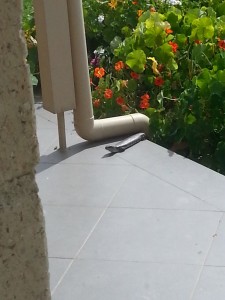 A local with his/her nasturtium home.
A local with his/her nasturtium home.
Nasturtiums have delighted both gardeners and cooks for centuries. They bear the botanical name Tropaeolum majus, meaning prize or trophy. The ones you find in most gardens today descend from mainly two species native to Peru. According to Jesuit missionaries, the Incas used nasturtiums as a salad vegetable and medicinal herb. They were introduced to Europe by Spanish conquistadors in the late 15th century and became known as Indian Cress or ‘Capucine‘ cress, as the flower shape resembled the hooded robes of Capucine monks. Leaves and flowers were consumed in salads, and the unripe seeds and flower buds were pickled and served as a substitute for capers. From Europe they made their way to North America as early as 1759 and into Thomas Jefferson’s garden. He listed them as a fruit, along with tomatoes.
Nasturtiums are happy flowers. My mother had a German word to describe the ‘attitude’ of these sort of plants – she said they were dankbar, meaning they were grateful or thankful. They grow nearly anywhere in Australia, even the most terrible soil does not seem to daunt them. However, they take exception to the very cold mountain ranges. If space is limited they will trail over pots on a balcony. Not only do they look magnificent and make you smile, they are seriously good food.
These humble super plants provide significant amounts of Vitamin C, B vitamins, iron, calcium, phosphorus, manganese, flavonoids and carotenoids. They are an immunity booster and medicinally they have been known to break down congestion, provide relief from colds, encourage the formation of blood cells, and they can be used as a blood purifier. Historically, they have been used to treat liver, kidney, bladder and skin disorders. They are an expectorant, as well as an antibiotic, anti-fungal and antiseptic. It’s very easy to make an infusion. As they promote menstruation, they are NOT SUITABLE FOR PREGNANT WOMEN.
Even the pug has developed a love for nasturtiums!
But there’s more! Nasturtium seeds can be made into an oil and used to varnish furniture. In the garden the trailing plants form outstanding living mulch, reduce weeds and retain soil moisture. I plant them around fruit bearing trees and my veggie patches, as they repel pests such as mites and aphids. They attract bees and secrete an essence into the soil that is absorbed by other plants, helping them to resist pests and disease.
So, folks, what are you waiting for? Plant some nasturtiums and fall in love with these green friends.
1 cup nasturtium leaves, flowers, and buds
1 pint champagne or white wine vinegar
Place the ingredients in a clean, clear glass jar or bottle. Tightly seal. Let sit for at least 3 weeks before using. Place a new nasturtium in the finished bottle for decoration, but you should make sure the vinegar always covers the flowers or they will mould. Makes 1 pint of vinegar to use in salads, sauces, and flavouring in other dishes.
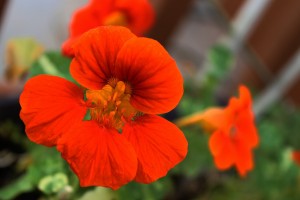
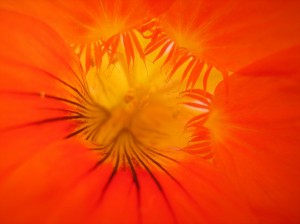
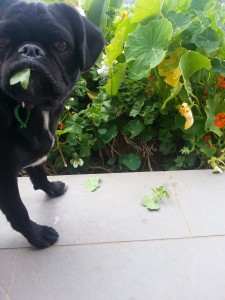
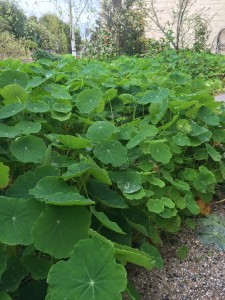
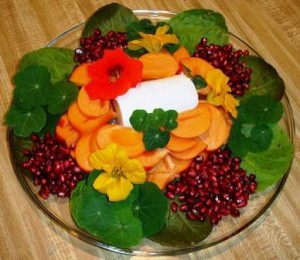
I love nasturtiums. Beautiful plants. We’ve scattered handfuls of their seeds around our place – hopefully the landlords don’t mind!
How useful can a nasturtium be. xx
Yes. Love them 🙂